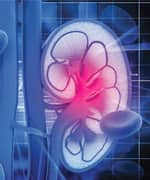Life Extension Magazine®
Subnormal Selenium Levels Linked With Increased Mortality | |
The European Journal of Clinical Nutrition reported an association between decreased serum selenium levels and a greater risk of mortality in an older population over a period of 6.8 years.* The study included 449 older men and women who participated in an epidemiologic project in southeast Sweden. Serum selenium levels were measured upon enrollment in January 2003 and in 98 subjects after 48 months. Through February 2010, there were 122 deaths from all causes, including 85 that were attributable to cardiovascular disease. Among those whose selenium levels were among the lowest quartile of subjects, there was an adjusted 43% increase in the risk of dying from any cause and a 56% increased risk of cardiovascular mortality in comparison with the remainder of the study population that had higher serum selenium levels. Editor’s Note: “This result may suggest the value of modest selenium supplementation in order to improve the health of the Swedish population,” the authors conclude. |
|
| Reference | |
* Eur J Clin Nutr. 2015 Jun 24. |
|
Weight Loss Plus Vitamin D Lowers Inflammation | |
The July 2015 issue of Cancer Prevention Research reports the findings of a randomized, placebo-controlled trial of overweight postmenopausal women, which uncovered a reduction in inflammation in response to weight loss and supplementation with vitamin D.* Participants in the study, whose serum 25-hydroxyvitamin D levels were lower than 32 ng/mL upon enrollment, were assigned to a five-day-per-week exercise program combined with a low-calorie diet supplemented with 2,000 IU (international units) vitamin D per day or a placebo for one year. Blood samples collected at the beginning and end of the study were assessed for markers of inflammation and other factors. Although changes in body mass index and other factors were similar between the groups, for those who lost 5 to 10% of their weight, the decline in the inflammatory cytokine interleukin-6 was significantly greater among those who received vitamin D compared to those who received a placebo. Editor’s Note: “It is thought that this state of chronic inflammation is pro-tumorigenic, that is, it encourages the growth of cancer cells,” commented lead author Catherine Duggan, PhD. “Weight loss reduces inflammation, and thus represents another mechanism for reducing cancer risk. If ensuring that vitamin D levels are replete, or at an optimum level, can decrease inflammation over and above that of weight loss alone, that can be an important addition to the tools people can use to reduce their cancer risk.” |
|
| Reference | |
* Cancer Prev Res (Phila). 2015 Jul;8(7): 628-35. |
Breast Cancer, Chemotherapy Connected To Weight Gain |
Breast cancer survivors are more likely to gain weight over a four-year period than women who have not had cancer, especially if they were treated with chemotherapy, according to a study by researchers at Johns Hopkins Kimmel Cancer Center. For the study, published in the journal Cancer Epidemiology, Biomarkers & Prevention, the researchers reviewed a baseline questionnaire and a follow-up one completed four years later by 303 breast cancer survivors and 307 cancer-free women.* In the four-year span, survivors gained more weight—an average of 3.6 pounds—than cancer-free women. Among 180 survivors diagnosed with cancer during the last five years of the study period, 21% gained at least 11 pounds over a four-year period compared with 11% of their cancer-free peers. The weight change findings remained the same after accounting for other factors associated with weight gain, such as increasing age, transition to menopause, and level of physical activity. Women who had completed chemotherapy within five years of the study were 2.1 times as likely as cancer-free women to gain at least 11 pounds during the study. Editor’s Note: The authors do not suggest patients worry about weight gain intervention during chemotherapy. “But we are suggesting that oncologists, internists, or anyone treating breast cancer survivors, including those with a family history of the disease, could help them monitor their weight over the long term,” they add. |
|
| Reference | |
* Cancer Epidemiol Biomarkers Prev. 2015 July 15. |
|
New Studies Show Metformin Is Indicated As A Potential Anticancer Drug | |
|
Numerous studies provide evidence of the anticancer effect of metformin.* A recent review published in PLOS One found an association between the diabetes medication and a significant reduction in the risk of colorectal, liver, pancreatic, stomach, and esophagus cancers in patients with myotonic dystrophy type II, an inherited disorder of the muscles and other body systems. A further study published in Cancer Prevention Research found that low doses of 250 mg per day of metformin administered for four weeks to nondiabetic patients suppressed markers for colorectal cancer. Metformin may impact cancer through indirect (insulin-dependent) and/or direct (insulin-independent) mechanisms. Metformin reduced lung tumor development primarily through an insulin-dependent mechanism by decreasing circulating levels of insulin-like growth factor-I (IGF). IGF activates its receptor, which in addition to a metabolic effect promotes proliferation and metastasis. The direct-insulin independent antitumor action of metformin is mainly induced by activating the AMPK signaling pathway, resulting in an inhibition of the mammalian target of rapamycin (mTOR), a signaling pathway that plays a central role in cancer cell growth, proliferation, and pathogenesis. The effects of metformin as a breast cancer target have been studied extensively. A study published in Cancer Research found that metformin targets cancer stem cell (tumor-initiating cells) in four genetically different kinds of breast cancer cell lines. Treatment with a low-dose of metformin was found to eliminate cancer stem cells, possibly due to the inhibition of the inflammatory pathway. This observation could be the definitive link between the diabetic drug and its anticancer benefits, since inflammation plays a key role in both diseases. Editor’s Note: Life Extension® Magazine has been reporting on the benefits of metformin since the early 1990s. While metformin has been available for use in Europe since the 1950s, the drug was not approved by the FDA for use in the United States until 1994. | |
| Reference | |
* Curr Cancer Drug Targets. 2015 Dec;15(1). | |
Resveratrol, Quercetin Could Improve Safety Of Cancer Drug | |
|
Findings described in the Journal of Controlled Release suggest that the polyphenols resveratrol and quercetin could help improve the safety of Adriamycin (doxorubicin), an effective but potentially cardiotoxic chemotherapy.* Adriamycin’s mechanism of cardiotoxicity involves reactive oxygen and nitrogen species generation, a phenomenon that is reduced by free radical scavengers such as these plant-derived compounds. Using a system involving polymeric micelles to improve bioavailability, Adam Alani of Oregon State University’s College of Pharmacy and associates first tested the compounds in human ovarian cancer cells and rat heart muscle cells. While Adriamycin was antagonistic toward heart cells, resveratrol and quercetin decreased the activity of caspases (protein-degrading enzymes) involved in apoptosis (programmed cell death) in these cells while not interfering with Adriamycin’s caspase activity in cancerous cells. Reactive oxygen species generated in both cell lines were reduced by resveratrol and quercetin only in the heart muscle cells. Editor’s Note: When the combo was tested in mice, resveratrol and quercetin were shown to confer full cardioprotection. | |
| Reference | |
* J Control Release. 2015 Jul 6;213:128-33. | |
Depression Higher In Men With Borderline Testosterone Levels | |
|
An article that appeared in the Journal of Sexual Medicine reports the findings of researchers at George Washington University of a greater risk of depression and depressive symptoms in men with borderline testosterone levels.* “In an era where more and more men are being tested for ‘low T’—or lower levels of testosterone—there is very little data about the men who have borderline low testosterone levels,” observed lead researcher Michael S. Irwig, MD. Dr. Irwig and his associates analyzed data from 200 men between 20 to 77 years of age who were referred for tertiary care for testosterone levels ranging from 200 to 350 ng/dL. Patient Health Questionnaire scores were used to determine the presence of depressive symptoms. The study results showed that, compared with the general population, men with borderline testosterone levels had a significantly higher rate of depression than the general population (56% versus 23%). Analysis showed that the study participants had higher rates of obesity and lower rates of physical activity than men in the general population. Study subjects also suffered from erectile dysfunction, decreased libido, fewer morning erections, low energy, and sleep disturbances. Rates of depression were 62% for study participants in their 20s and 30s, 65% for those in their 40s, 51% for those in their 50s and 45% for those age 60 and over. Editor’s Note: “Clinicians should consider screening for depression/depressive symptoms and overweight and unhealthy lifestyle risk factors in men referred for tertiary care for potential hypogonadism,” the authors conclude. Life Extension has long urged aging men to consider maintaining total testosterone levels in the range of 700-900 ng/dL, which is where younger, healthier men normally are. | |
| Reference | |
* J Sex Med. 2015 Jun 30. | |
Making More Transplantable Organs Available | |
According to the World Health Organization, organ transplants are meeting less than 10% of the global need. In the United States, critical shortages of kidneys, hearts, and livers for transplant result in huge numbers of needless deaths. The Life Extension® Foundation funds a full-time research project to perfect organ preservation so that more organs will be available for transplant. Cryobiologists at a laboratory funded by Life Extension®—21st Century Medicine—have made an important advance in kidney cryopreservation.* A common way to measure some aspects of kidney function is to measure an animal’s (or human’s) creatinine level in its blood. Creatinine is a waste product of muscle metabolism, and accumulates in the blood when the kidney is not functioning well. Kidney tubules (nephrons) excrete creatinine as an extended network of small, tissue conduits that filter and reabsorb various blood components. Because they are so small and sensitive to damage, the nephrons of the kidney must be very carefully cryopreserved so as to avoid freezing and thawing damage from ice formation. When the nephrons are damaged, one way to notice this damage is to observe a high level of creatinine in the blood. Cryobiologists at 21st Century Medicine have recently made significant progress in kidney cryopreservation by making new refinements in their cryopreservation protocols. Previously, cutting-edge techniques for protecting kidneys from ice formation resulted in levels of creatinine in the blood of animals receiving transplants of protected kidneys that were at the borderline of acceptable function, and only 75% of the kidneys fully survived the procedure. This indicated that these previously used protocols were encouraging, but still caused undesirable levels of kidney damage. By further refining their protocols, researchers have substantially lowered the peak creatinine in these animals receiving cryoprotected kidneys. Moreover, these improvements to their protocols substantially reduced the amount of recovery time required for these transplanted kidneys to restore normal creatinine levels. This was accomplished in as little as eight days post-operation, which is shorter than the time many human kidneys require to function after transplantation today. Post-transplant, a low peak creatinine, combined with a relatively short recovery time to normal creatinine, suggest the kidneys were minimally damaged by the cryoprotection protocol, and much (or all) of that damage was quickly repaired once transplanted into an otherwise healthy animal. Just as importantly, as the peak creatinine goes down, the chance of a kidney not surviving also goes down, and so far, all kidneys have fully survived the procedure. These kinds of advances may lead to the development of organ banks where tissue-typed matched donor kidneys and other organs will be stored and made available to all people in need, just as blood banks provide this lifesaving function today. According to the Organ Preservation Alliance, being able to bank lungs and hearts could eliminate the current waiting list for these organs in two to three years or less, and being able to bank kidneys could increase the effective supply of kidneys by more than 25%. Currently in the US, there are more deaths from organ failure than from cancer and the global cost of end-stage renal disease has been estimated at $1 trillion per decade. | |
| Reference | |
*Available at: http://www.21cm.com/transplant.html. Accessed September 1, 2015. | |
Increased Vitamin C Linked To Reduced Risk Of Early Mortality | |
The American Journal of Clinical Nutrition published findings from researchers at the University of Copenhagen of a lower risk of cardiovascular disease and premature death in association with increases in plasma vitamin C and fruit and vegetable intake.* The investigators analyzed data from 87,030 men and women enrolled in the Copenhagen General Population Study and 10,173 participants in the Copenhagen City Heart Study. Plasma vitamin C levels were measured in 3,512 newly recruited subjects and dietary intake data was available for 83,256 subjects. Ischemic heart disease was documented in 10,123 individuals and there were 8,477 deaths over the studies’ follow-up periods. “We can see that those with the highest intake of fruit and vegetables have a 15% lower risk of developing cardiovascular disease and a 20% lower risk of early death compared with those who very rarely eat fruit and vegetables,” reported lead author Camilla Kobylecki. Editor’s Note : “At the same time, we can see that the reduced risk is related to high vitamin C concentrations in the blood from the fruit and vegetables,” Dr. Kobylecki added. | |
| Reference | |
* Am J Clin Nutr. 2015 Jun;101(6):1135-43. | |
Minimum Vitamin D Dose Inadequate For Overweight African Americans | |
On July 4, 2015, the journal BioMed Central Obesity published the results of a trial of overweight and obese African Americans that revealed a failure of the Institute of Medicine’s recommended minimum daily dose of vitamin D to elevate serum levels to a healthy range after 16 weeks of treatment.* The trial included 70 overweight or obese African Americans between the ages of 13 to 45 years with 25 hydroxyvitamin D levels of 20 ng/mL or lower. Participants were randomized to groups that received a placebo or a monthly dose equivalent to 600 IU (international units), 2,000 IU, or 4,000 IU vitamin D per day for 16 weeks. While the two higher doses were successful at restoring serum vitamin D levels to 30 ng/mL or more at 16 weeks, those who were given the lowest dose failed to achieve this level. Editor’s Note: In contrast, participants in the 2,000 and 4,000 IU equivalent group reached a serum level of 30 ng/mL as early as eight weeks. Life Extension has long recommended that optimal 25-hydroxyvitamin D levels are in the range of 50-80 ng/mL. | |
| Reference | |
* BMC Obes. 2014 Jul 4. |
|
Aging Switch Located | |
Reducing many of the effects of aging might be something as simple as the flip of a switch, according to a report published on July 23, 2015, in Molecular Cell.* Research conducted at Northwestern University found that the heat shock response, which is essential for proper protein formation and cellular health, declined steeply over a period of hours that coincided with the onset of reproductive maturity in C. elegans (a roundworm used in aging experiments) due to the activation of a genetic switch. The switch is conserved in humans and other animals, making it a target for aging research. By blocking germline cells from sending the signal, Richard I. Morimoto and Jonathan Labbadia found that the tissues of adult animals remained stress resistant. “We had, in a sense, a super stress-resistant animal that is robust against all kinds of cellular stress and protein damage,” Dr. Morimoto reported. Editor’s Note: “C. elegans has told us that aging is not a continuum of various events, which a lot of people thought it was,” Dr. Morimoto commented. “In a system where we can actually do the experiments, we discover a switch that is very precise for aging. All these stress pathways that ensure robustness of tissue function are essential for life, so it was unexpected that a genetic switch is literally thrown eight hours into adulthood, leading to the simultaneous repression of the heat shock response and other cell stress responses.” | |
| Reference | |
|
* Mol Cell. 2015 July 23. |








